KSZ9031RN 4/4 Transceiver Full Ethernet 48-QFN[FAQ]: Datasheet, Features, and Pinout
48 Terminations KSZ9031 Receivers 4/4 Drivers/Receivers 1 Functions
The KSZ9031RN is a fully integrated triple-speed Ethernet physical-layer transceiver. This article is going to introduce pinout, applications, features, and more details about KSZ9031RN.
Overview of KSZ9031RN
The KSZ9031RN is a fully integrated triple-speed (10Base-T/100Base-TX/1000Base-T) Ethernet physical-layer transceiver that allows data to be transmitted and received over standard CAT-5 unshielded twisted pair (UTP) cable.
The KSZ9031RN supports the industry-standard GMII/MII (Gigabit Media Independent Interface/Media Independent Interface) for data transfer at 1000Mbps or 10/100Mbps when connected to GMII/MII MACs in Gigabit Ethernet processors and switches. The KSZ9031RNX is a media-independent reduced gigabit interface (RGMII).
The KSZ9031RN uses on-chip termination resistors for the four differential pairs and integrates an LDO controller to drive a low-cost MOSFET to supply the 1.2V core, lowering board cost and simplifying board layout.
KSZ9031RN Features
Single-chip 10/100/1000Mbps IEEE 802.3 compliant Ethernet transceiver
KSZ9031Mxx feature GMII/MII standard interface with 3.3V/2.5V/1.8V tolerant I/Os
KSZ9031Rxx feature RGMII timing supports on-chip delay according to RGMII Version 2.0, with programming options for the external delay and making adjustments and corrections to TX and RX timing paths
GMII/MII/RGMII with 3.3V/2.5V/1.8V tolerant I/Os
Auto-negotiation to automatically select the highest linkup speed (10/100/1000Mbps) and duplex (half/full)
On-chip termination resistors for the differential pairs
On-chip LDO controller to support single 3.3V supply operation – requires only one external FET to generate 1.2V for the core
Jumbo frame support up to 16KB
125MHz Reference Clock Output
Energy-detect power-down mode for reduced power consumption when the cable is not attached
Wake-on-LAN (WOL) support with robust custom-packet detection
AEC-Q100 qualified for automotive applications (KSZ9031RNXUB-VAO, KSZ9031RNXVB-VAO)
Programmable LED outputs for link, activity, and speed
Baseline wander correction
LinkMD® TDR-based cable diagnostic to identify faulty copper cabling
Parametric NAND tree support to detect faults between chip I/Os and board
Loopback modes for diagnostics
Automatic MDI/MDI-X crossover to detect and correct pair swap at all speeds of operation
Automatic detection and correction of pair swaps, pair skew, and pair polarity
MDC/MDIO management interface for PHY register configuration
Interrupt pin option
Power-down and power-saving modes
Core (DVDDL, AVDDL, AVDDL_PLL): 1.2V (external FET or regulator)
VDD I/O (DVDDH): 3.3V, 2.5V, or 1.8V
Transceiver (AVDDH): 3.3V or 2.5V (commercial temp)
Available in 48-pin QFN (7mm x 7mm) and 64-pin QFN (8mm x 8mm) packages
Specifications
- TypeParameter
- Mounting Type
The "Mounting Type" in electronic components refers to the method used to attach or connect a component to a circuit board or other substrate, such as through-hole, surface-mount, or panel mount.
Surface Mount - Package / Case
refers to the protective housing that encases an electronic component, providing mechanical support, electrical connections, and thermal management.
48-VFQFN Exposed Pad - Surface Mount
having leads that are designed to be soldered on the side of a circuit board that the body of the component is mounted on.
YES - Usage LevelAutomotive grade
- Operating Temperature
The operating temperature is the range of ambient temperature within which a power supply, or any other electrical equipment, operate in. This ranges from a minimum operating temperature, to a peak or maximum operating temperature, outside which, the power supply may fail.
0°C~70°C - Packaging
Semiconductor package is a carrier / shell used to contain and cover one or more semiconductor components or integrated circuits. The material of the shell can be metal, plastic, glass or ceramic.
Tray - Published2012
- JESD-609 Code
The "JESD-609 Code" in electronic components refers to a standardized marking code that indicates the lead-free solder composition and finish of electronic components for compliance with environmental regulations.
e3 - Part Status
Parts can have many statuses as they progress through the configuration, analysis, review, and approval stages.
Obsolete - Moisture Sensitivity Level (MSL)
Moisture Sensitivity Level (MSL) is a standardized rating that indicates the susceptibility of electronic components, particularly semiconductors, to moisture-induced damage during storage and the soldering process, defining the allowable exposure time to ambient conditions before they require special handling or baking to prevent failures
3 (168 Hours) - Number of Terminations48
- ECCN Code
An ECCN (Export Control Classification Number) is an alphanumeric code used by the U.S. Bureau of Industry and Security to identify and categorize electronic components and other dual-use items that may require an export license based on their technical characteristics and potential for military use.
EAR99 - TypeTransceiver
- Terminal Finish
Terminal Finish refers to the surface treatment applied to the terminals or leads of electronic components to enhance their performance and longevity. It can improve solderability, corrosion resistance, and overall reliability of the connection in electronic assemblies. Common finishes include nickel, gold, and tin, each possessing distinct properties suitable for various applications. The choice of terminal finish can significantly impact the durability and effectiveness of electronic devices.
Matte Tin (Sn) - annealed - HTS Code
HTS (Harmonized Tariff Schedule) codes are product classification codes between 8-1 digits. The first six digits are an HS code, and the countries of import assign the subsequent digits to provide additional classification. U.S. HTS codes are 1 digits and are administered by the U.S. International Trade Commission.
8542.39.00.01 - Voltage - Supply
Voltage - Supply refers to the range of voltage levels that an electronic component or circuit is designed to operate with. It indicates the minimum and maximum supply voltage that can be applied for the device to function properly. Providing supply voltages outside this range can lead to malfunction, damage, or reduced performance. This parameter is critical for ensuring compatibility between different components in a circuit.
1.8V 2.5V 3.3V - Terminal Position
In electronic components, the term "Terminal Position" refers to the physical location of the connection points on the component where external electrical connections can be made. These connection points, known as terminals, are typically used to attach wires, leads, or other components to the main body of the electronic component. The terminal position is important for ensuring proper connectivity and functionality of the component within a circuit. It is often specified in technical datasheets or component specifications to help designers and engineers understand how to properly integrate the component into their circuit designs.
QUAD - Terminal Form
Occurring at or forming the end of a series, succession, or the like; closing; concluding.
NO LEAD - Peak Reflow Temperature (Cel)
Peak Reflow Temperature (Cel) is a parameter that specifies the maximum temperature at which an electronic component can be exposed during the reflow soldering process. Reflow soldering is a common method used to attach electronic components to a circuit board. The Peak Reflow Temperature is crucial because it ensures that the component is not damaged or degraded during the soldering process. Exceeding the specified Peak Reflow Temperature can lead to issues such as component failure, reduced performance, or even permanent damage to the component. It is important for manufacturers and assemblers to adhere to the recommended Peak Reflow Temperature to ensure the reliability and functionality of the electronic components.
NOT SPECIFIED - Number of Functions1
- Supply Voltage
Supply voltage refers to the electrical potential difference provided to an electronic component or circuit. It is crucial for the proper operation of devices, as it powers their functions and determines performance characteristics. The supply voltage must be within specified limits to ensure reliability and prevent damage to components. Different electronic devices have specific supply voltage requirements, which can vary widely depending on their design and intended application.
1.2V - Terminal Pitch
The center distance from one pole to the next.
0.5mm - Time@Peak Reflow Temperature-Max (s)
Time@Peak Reflow Temperature-Max (s) refers to the maximum duration that an electronic component can be exposed to the peak reflow temperature during the soldering process, which is crucial for ensuring reliable solder joint formation without damaging the component.
NOT SPECIFIED - Base Part Number
The "Base Part Number" (BPN) in electronic components serves a similar purpose to the "Base Product Number." It refers to the primary identifier for a component that captures the essential characteristics shared by a group of similar components. The BPN provides a fundamental way to reference a family or series of components without specifying all the variations and specific details.
KSZ9031 - JESD-30 Code
JESD-30 Code refers to a standardized descriptive designation system established by JEDEC for semiconductor-device packages. This system provides a systematic method for generating designators that convey essential information about the package's physical characteristics, such as size and shape, which aids in component identification and selection. By using JESD-30 codes, manufacturers and engineers can ensure consistency and clarity in the specification of semiconductor packages across various applications and industries.
S-XQCC-N48 - Protocol
In electronic components, the parameter "Protocol" refers to a set of rules and standards that govern the communication between devices. It defines the format, timing, sequencing, and error checking methods for data exchange between different components or systems. Protocols ensure that devices can understand and interpret data correctly, enabling them to communicate effectively with each other. Common examples of protocols in electronics include USB, Ethernet, SPI, I2C, and Bluetooth, each with its own specifications for data transmission. Understanding and adhering to protocols is essential for ensuring compatibility and reliable communication between electronic devices.
Ethernet - Number of Drivers/Receivers4/4
- Screening Level
In electronic components, the term "Screening Level" refers to the level of testing and inspection that a component undergoes to ensure its reliability and performance. This process involves subjecting the component to various tests, such as temperature cycling, burn-in, and electrical testing, to identify any defects or weaknesses that could affect its functionality. The screening level is typically determined based on the application requirements and the criticality of the component in the system. Components that undergo higher screening levels are generally more reliable but may also be more expensive. Overall, the screening level helps to ensure that electronic components meet the necessary quality standards for their intended use.
TS 16949 - Duplex
In the context of electronic components, "Duplex" refers to a type of communication system that allows for bidirectional data flow. It enables two devices to communicate with each other simultaneously, allowing for both sending and receiving of data at the same time. Duplex communication can be further categorized into two types: half-duplex, where data can be transmitted in both directions but not at the same time, and full-duplex, where data can be sent and received simultaneously. This parameter is crucial in networking and telecommunications systems to ensure efficient and effective data transmission between devices.
Full - Length7mm
- Height Seated (Max)
Height Seated (Max) is a parameter in electronic components that refers to the maximum allowable height of the component when it is properly seated or installed on a circuit board or within an enclosure. This specification is crucial for ensuring proper fit and alignment within the overall system design. Exceeding the maximum seated height can lead to mechanical interference, electrical shorts, or other issues that may impact the performance and reliability of the electronic device. Manufacturers provide this information to help designers and engineers select components that will fit within the designated space and function correctly in the intended application.
0.9mm - Width7mm
- RoHS Status
RoHS means “Restriction of Certain Hazardous Substances” in the “Hazardous Substances Directive” in electrical and electronic equipment.
ROHS3 Compliant
KSZ9031RN Pinout

KSZ9031RN Pinout
KSZ9031RN 3D Model
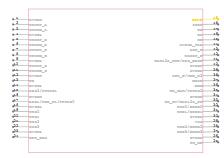
KSZ9031RN Symbol

KSZ9031RN Footprint
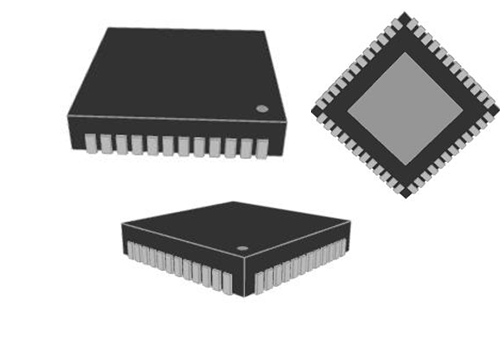
KSZ9031RN 3D Model
KSZ9031RN Application
• Laser/Network Printer
• Network Attached Storage (NAS)
• Network Server
• Gigabit LAN on Motherboard (GLOM)
• Broadband Gateway
• Gigabit SOHO/SMB Router
• IPTV
• IP Set-Top Box
• Game Console
• Triple-Play (Data, Voice, Video) Media Center
• Industrial Control
• Automotive In-Vehicle Networking
KSZ9031RN Manufacturer
Microchip Technology Inc. is a leading provider of microcontroller and analog semiconductors, providing low-risk product development, lower total system cost, and faster time to market for thousands of diverse customer applications worldwide. Headquartered in Chandler, Arizona, Microchip offers outstanding technical support along with dependable delivery and quality.
Datasheet PDF
- PCN Packaging :
Popularity by Region
How many pins of KSZ9031RN?
48 pins.
What’s the operating temperature of KSZ9031RN?
0°C~70°C.
What’s the supply voltage of KSZ9031RN?
1.2V.
What’s the packaging way of KSZ9031RN?
Tray.
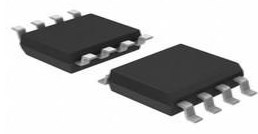 LF351 Op-Amp: Pinout, Circuit and Replacement
LF351 Op-Amp: Pinout, Circuit and Replacement29 July 20215068
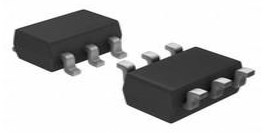 TPS22810TDBVRQ1 Load Switch: Layout, Pinout, and Datasheet
TPS22810TDBVRQ1 Load Switch: Layout, Pinout, and Datasheet13 April 20221857
 1N5822 Schottky Diode: Pinout, Datasheet, and Applications
1N5822 Schottky Diode: Pinout, Datasheet, and Applications12 July 20215401
 Understanding the STM32L151CBT6A Microcontroller in Detail
Understanding the STM32L151CBT6A Microcontroller in Detail07 June 2025133
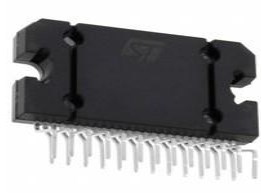 TDA7850 Amplifier: Package, Pinout, and Datasheet
TDA7850 Amplifier: Package, Pinout, and Datasheet27 October 202111212
 PIC10F200/202/204/206 Microcontrollers: Technical Insights
PIC10F200/202/204/206 Microcontrollers: Technical Insights29 February 202464
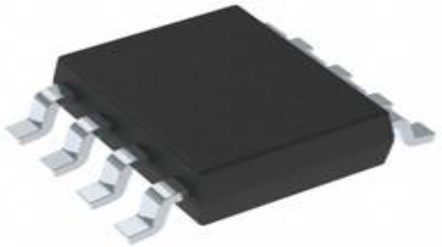 LM53601LQDSXTQ1: Pinout, Automotive, Step-Down, Converter
LM53601LQDSXTQ1: Pinout, Automotive, Step-Down, Converter14 February 2022266
 OV7670 vs OV2640 Which one is better?
OV7670 vs OV2640 Which one is better?03 March 20223737
 What Determines the Maximum Operating Frequency of a Diode?
What Determines the Maximum Operating Frequency of a Diode?29 June 202211315
 Switching Diodes Basics: Working, Types and Circuit Analysis
Switching Diodes Basics: Working, Types and Circuit Analysis24 October 202539961
 Semiconductor Devices: Impact on IoT and Modern Communication (Part-1)
Semiconductor Devices: Impact on IoT and Modern Communication (Part-1)22 July 20242205
 Characteristics, Types, and Functions of Electrolytic Capacitors
Characteristics, Types, and Functions of Electrolytic Capacitors17 October 20259252
 Latest Pushbutton Switch Designs Transforming Modern Devices
Latest Pushbutton Switch Designs Transforming Modern Devices11 July 2025868
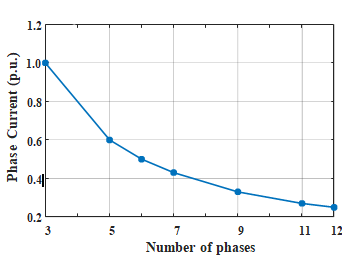 Revolutionizing Automotive Traction: A Comprehensive Review of Multiphase Drives for Next-Generation Vehicles
Revolutionizing Automotive Traction: A Comprehensive Review of Multiphase Drives for Next-Generation Vehicles04 May 20232494
 Power Management Integrated Circuit (PMIC) Guide
Power Management Integrated Circuit (PMIC) Guide10 February 202212642
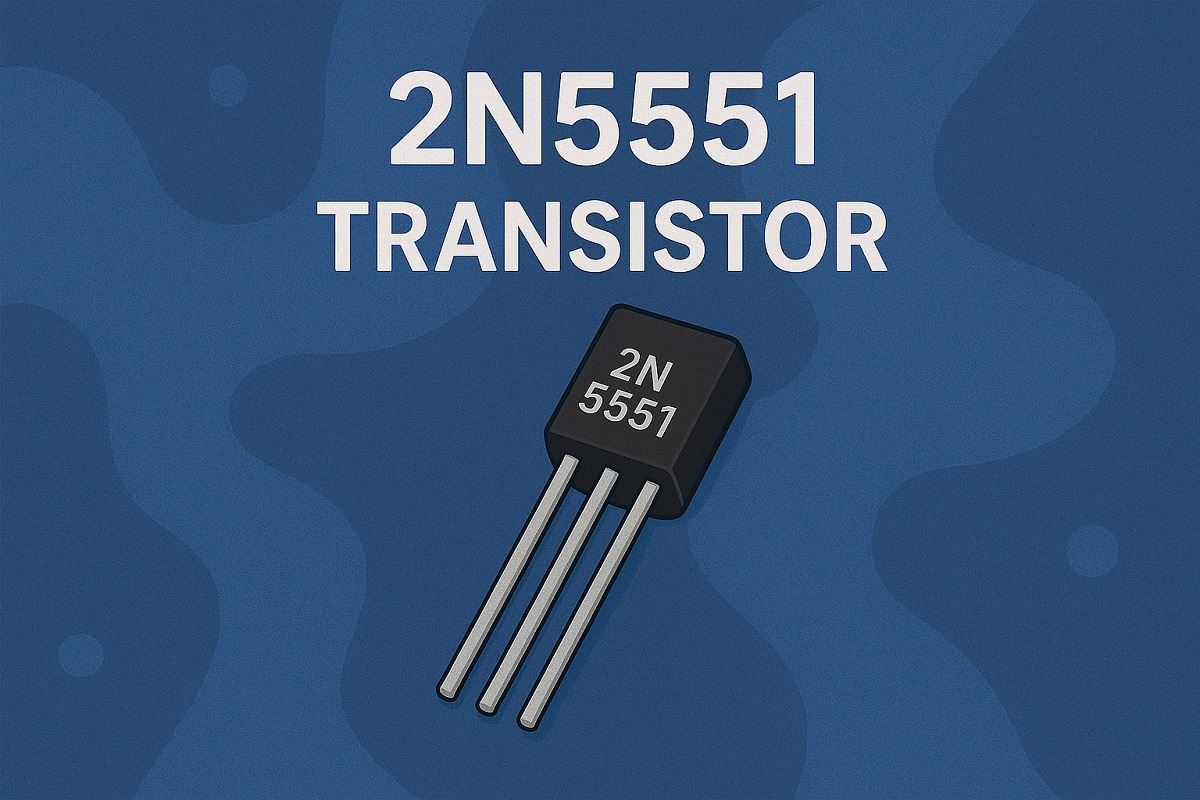 A Beginner's Guide to the 2N5551 Transistor and Its Uses
A Beginner's Guide to the 2N5551 Transistor and Its Uses27 May 20251336
Microchip Technology
In Stock
United States
China
Canada
Japan
Russia
Germany
United Kingdom
Singapore
Italy
Hong Kong(China)
Taiwan(China)
France
Korea
Mexico
Netherlands
Malaysia
Austria
Spain
Switzerland
Poland
Thailand
Vietnam
India
United Arab Emirates
Afghanistan
Åland Islands
Albania
Algeria
American Samoa
Andorra
Angola
Anguilla
Antigua & Barbuda
Argentina
Armenia
Aruba
Australia
Azerbaijan
Bahamas
Bahrain
Bangladesh
Barbados
Belarus
Belgium
Belize
Benin
Bermuda
Bhutan
Bolivia
Bonaire, Sint Eustatius and Saba
Bosnia & Herzegovina
Botswana
Brazil
British Indian Ocean Territory
British Virgin Islands
Brunei
Bulgaria
Burkina Faso
Burundi
Cabo Verde
Cambodia
Cameroon
Cayman Islands
Central African Republic
Chad
Chile
Christmas Island
Cocos (Keeling) Islands
Colombia
Comoros
Congo
Congo (DRC)
Cook Islands
Costa Rica
Côte d’Ivoire
Croatia
Cuba
Curaçao
Cyprus
Czechia
Denmark
Djibouti
Dominica
Dominican Republic
Ecuador
Egypt
El Salvador
Equatorial Guinea
Eritrea
Estonia
Eswatini
Ethiopia
Falkland Islands
Faroe Islands
Fiji
Finland
French Guiana
French Polynesia
Gabon
Gambia
Georgia
Ghana
Gibraltar
Greece
Greenland
Grenada
Guadeloupe
Guam
Guatemala
Guernsey
Guinea
Guinea-Bissau
Guyana
Haiti
Honduras
Hungary
Iceland
Indonesia
Iran
Iraq
Ireland
Isle of Man
Israel
Jamaica
Jersey
Jordan
Kazakhstan
Kenya
Kiribati
Kosovo
Kuwait
Kyrgyzstan
Laos
Latvia
Lebanon
Lesotho
Liberia
Libya
Liechtenstein
Lithuania
Luxembourg
Macao(China)
Madagascar
Malawi
Maldives
Mali
Malta
Marshall Islands
Martinique
Mauritania
Mauritius
Mayotte
Micronesia
Moldova
Monaco
Mongolia
Montenegro
Montserrat
Morocco
Mozambique
Myanmar
Namibia
Nauru
Nepal
New Caledonia
New Zealand
Nicaragua
Niger
Nigeria
Niue
Norfolk Island
North Korea
North Macedonia
Northern Mariana Islands
Norway
Oman
Pakistan
Palau
Palestinian Authority
Panama
Papua New Guinea
Paraguay
Peru
Philippines
Pitcairn Islands
Portugal
Puerto Rico
Qatar
Réunion
Romania
Rwanda
Samoa
San Marino
São Tomé & Príncipe
Saudi Arabia
Senegal
Serbia
Seychelles
Sierra Leone
Sint Maarten
Slovakia
Slovenia
Solomon Islands
Somalia
South Africa
South Sudan
Sri Lanka
St Helena, Ascension, Tristan da Cunha
St. Barthélemy
St. Kitts & Nevis
St. Lucia
St. Martin
St. Pierre & Miquelon
St. Vincent & Grenadines
Sudan
Suriname
Svalbard & Jan Mayen
Sweden
Syria
Tajikistan
Tanzania
Timor-Leste
Togo
Tokelau
Tonga
Trinidad & Tobago
Tunisia
Turkey
Turkmenistan
Turks & Caicos Islands
Tuvalu
U.S. Outlying Islands
U.S. Virgin Islands
Uganda
Ukraine
Uruguay
Uzbekistan
Vanuatu
Vatican City
Venezuela
Wallis & Futuna
Yemen
Zambia
Zimbabwe
















